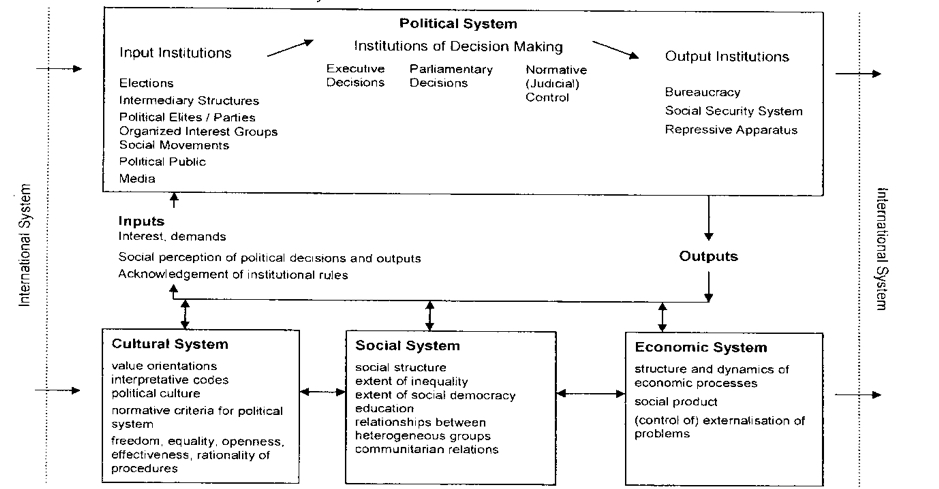Overview
The model of a democratic political system

The model above integrates major components of a democratic political system. The most basic interpretation of the model is that the outputs of the system (authoritative decisions about policy, regulation, and the allocation of resources) influence the social, economic and cultural spheres in a given country. In combination with historical-cultural and international influences, the three spheres shape the perceptions and values of the citizens and lead to the articulation of their interests and demands in the form of inputs (what people need or want for the future). The model illustrates the vital interdependence within democracies between outputs of the political institutions and inputs of citizens.
For this reason, the key interest of the empirical study of democracy falls on the interplay between political institutions and political culture. In the social sciences political culture is defined as the widely held and shared values and beliefs of the citizens that have political consequences. The interest in studying the correlation between political institutions and political culture springs from the fact that political institutions function and persist only if they enjoy the support of the citizens. Once they lose citizens’ support they tend to break down.
In the following two sections we will see that in democracies institutions and political culture operate in a continually cyclical manner: society has certain demands that it puts to the institutions for implementation, while politicians operate the institutions to steer society in directions that they see as the most important for society. However, there can be mismatches: citizens put forth certain expectations that cannot be easily met, while politicians may end up manipulating institutions more for their own benefit than that of those they are supposed to represent.
Another important principle to keep in mind is that both institutions and culture can be studied in both democratic and authoritarian contexts. We can have presidents in a country like Brazil and Angola, but we should keep in mind that the former is actually much more democratic than the latter. Likewise, political attitudes and norms will be very different if we compare Estonia to Eritrea. Therefore, most researchers take care to control for regime type when they study either institutions or culture, since they need to establish that institutions are operating in a truly free context and that survey data about political attitudes have been collected in an open environment.

